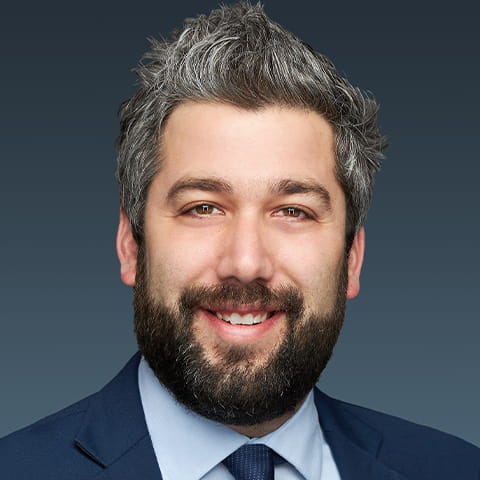Our solutions are tailored to each client’s strategic business drivers, technologies, corporate structure, and culture.
Opportunity Zones extended and overhauled under OBBB
The OZ program is now permanent, but new rules and tract re-evaluations begin in 2026.
The Opportunity Zone (OZ) program, originally established under the 2017 Tax Cuts and Jobs Act, has been updated, extended, and made permanent by the One Big Beautiful Bill Act (OBBB), which was signed by President Trump on July 4, 2025.
This is a welcomed extension for investors, sponsors, and communities impacted by OZ rules as the deadline for the original program was set to expire for gains after Dec. 31, 2026.
There are several revisions made to the OZ program in OBBB that will mostly impact new capital entering the program after Dec. 31, 2026.
Below are some updates as well as some additional commentary on the changes.
Updates to eligibility, definitions
- Census tract re-evaluation. While the OZ program is now permanent, the OZ census tracts will be re-evaluated every 10 years. The originally selected OZ census tracts will continue to be eligible for investment through Dec. 31, 2026. Beginning on July 1, 2026, the current OZ census tracts will be re-evaluated, and each state will select new OZ census tracts to be utilized for the next 10 years. While there is still more guidance needed on this process, it is likely that some existing OZ tracts will remain the same, while some new OZ census tracts will also be selected (replacing previous tracts). Also, the criteria to qualify as an OZ tract has become more stringent, responding to concerns by Congress.
- Low-income community qualifications. The definition for what qualifies as a low-income community for OZ tract selection purposes has changed. Starting with the new selection process, a low-income community means any census tract if the median family income does not exceed 70% of the metropolitan area or statewide median family income. This is a change from the previous 80% threshold. Alternatively, a census tract still qualifies as low-income if it has a poverty rate of at least 20%; however, there is a new rule that disqualifies the tract if it exceeds 125% of the metropolitan area or statewide median family income. Presumably, this was put in place to eliminate some tracts that exist in gentrified areas.
- Contiguous tracts. The rule that allowed for contiguous tracts to low-income tracts to be selected has been repealed. Therefore, any census tract under consideration to be selected must meet the definition of a low-income community; there is no more “piggybacking” of adjacent tracts.
- Puerto Rico designations. The provision that allowed Puerto Rico to designate unlimited tracts was repealed, so it now seems there will be specific tracts selected in Puerto Rico as well.
Renewal of tax benefits
Beginning on Jan. 1, 2027, some of the major tax benefits that had lapsed with the first round of OZ investments generally are being reinstated. Investors that contribute capital gain dollars to a Qualified Opportunity Fund (QOF) will be able to defer their capital gain for the earlier of five years or until they dispose of their OZ investment. In addition to the five-year rolling clock, investors will also receive a 10% step-up in their basis when they pay their deferred capital gain after five years (effectively reducing their tax liability by 10%).
Gain elimination revised
Investors that hold their QOF investment for at least 10 years are eligible to exclude the gain from their investment at the time of sale. There is a new rule if an investor holds a QOF interest for more than 30 years, the basis of their QOF investment will be stepped-up to the fair market value as of the 30-year mark. Any additional appreciation of the assets after the 30-year mark will be taxable upon sale or disposition.
Qualified Rural Opportunity Fund
OBBB also created a new type of OZ fund called a Qualified Rural Opportunity Fund (QROF). A QROF generally must follow most of the same rules as a typical QOF; however, the OZ census tract must be in a rural area (generally defined as population of less than 50,000). Investors in a QROF receive a 30% step-up in basis (as opposed to the general QOF step-up of 10%) when their deferred capital gain becomes taxable after five years. Additionally, for existing buildings owned by a QROF, the “substantial improvement” definition is altered and only 50% of the basis of the existing building needs to be spent on improvements (lowered from 100%). This is a substantial new benefit for QROFs, and it will make investments easier to qualify in rural areas.
New reporting requirements
QOFs and QROFs will also have increased reporting requirements on their tax return filings. Additional information will need to be reported for any QOZ stock/partnership investments including the QOZ business name, address, NAICS code identifying their trade/business, approximate number of residential units, and approximate average monthly full-time equivalent employees. There are also additional reporting requirements for any investors disposing of their interest. Finally, OBB introduced new penalties if tax returns are not filed timely or accurately.
We are still waiting on additional guidance and regulations that will provide more specifics on the updates in OBBB. Continue to check back-in as we will provide updates as available.
Contact
Let’s start a conversation about your company’s strategic goals and vision for the future.
Please fill all required fields*
Please verify your information and check to see if all require fields have been filled in.















